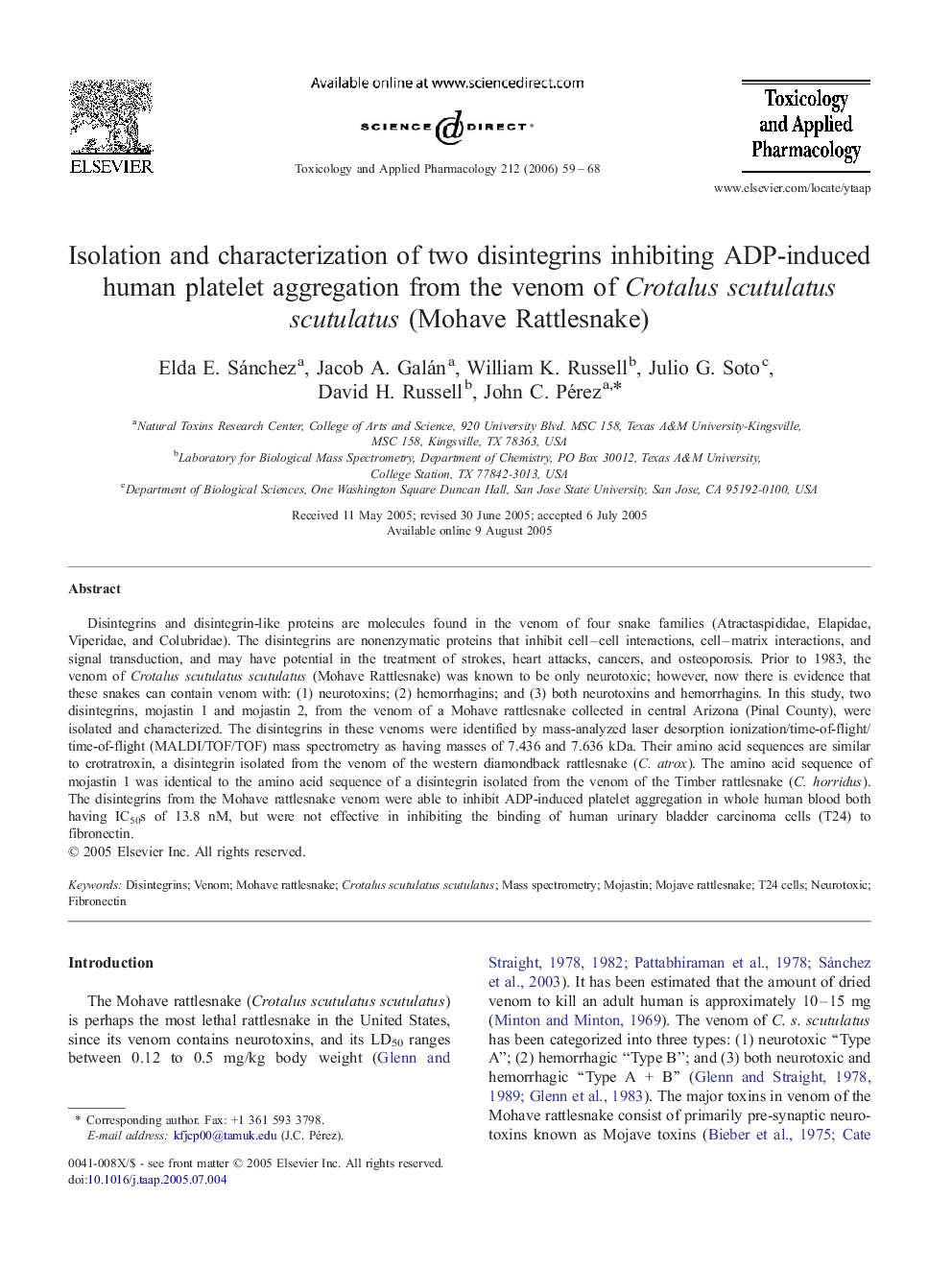| کد مقاله | کد نشریه | سال انتشار | مقاله انگلیسی | نسخه تمام متن |
|---|---|---|---|---|
| 2571866 | 1128655 | 2006 | 10 صفحه PDF | دانلود رایگان |

Disintegrins and disintegrin-like proteins are molecules found in the venom of four snake families (Atractaspididae, Elapidae, Viperidae, and Colubridae). The disintegrins are nonenzymatic proteins that inhibit cell–cell interactions, cell–matrix interactions, and signal transduction, and may have potential in the treatment of strokes, heart attacks, cancers, and osteoporosis. Prior to 1983, the venom of Crotalus scutulatus scutulatus (Mohave Rattlesnake) was known to be only neurotoxic; however, now there is evidence that these snakes can contain venom with: (1) neurotoxins; (2) hemorrhagins; and (3) both neurotoxins and hemorrhagins. In this study, two disintegrins, mojastin 1 and mojastin 2, from the venom of a Mohave rattlesnake collected in central Arizona (Pinal County), were isolated and characterized. The disintegrins in these venoms were identified by mass-analyzed laser desorption ionization/time-of-flight/time-of-flight (MALDI/TOF/TOF) mass spectrometry as having masses of 7.436 and 7.636 kDa. Their amino acid sequences are similar to crotratroxin, a disintegrin isolated from the venom of the western diamondback rattlesnake (C. atrox). The amino acid sequence of mojastin 1 was identical to the amino acid sequence of a disintegrin isolated from the venom of the Timber rattlesnake (C. horridus). The disintegrins from the Mohave rattlesnake venom were able to inhibit ADP-induced platelet aggregation in whole human blood both having IC50s of 13.8 nM, but were not effective in inhibiting the binding of human urinary bladder carcinoma cells (T24) to fibronectin.
Journal: Toxicology and Applied Pharmacology - Volume 212, Issue 1, 1 April 2006, Pages 59–68